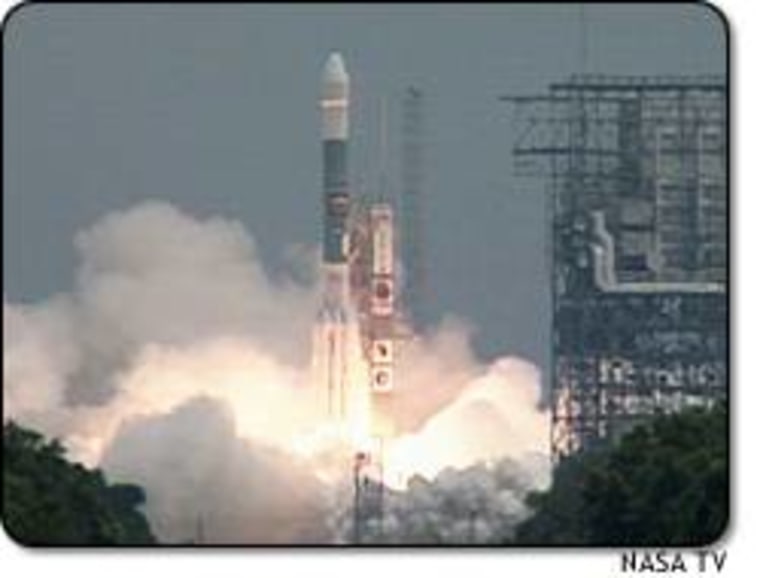NASA on Tuesday launched the first of two golf-cart-size rovers that will ramble across the rocky, red soil of Mars and drill for evidence that the Red Planet once had enough water to support life. The rover, named Spirit, lifted off aboard a Boeing Delta II rocket on the seven-month journey to Mars.
Thunderstorms delayed the launch two days in a row, and officials also had to contend with a last-minute communications glitch with the ground tracking stations.
The second rover, named Opportunity, will be launched later this month, and both are expected to arrive at Mars in January.
Launch official Mark Levigne told Spirit to “have a safe journey and a successful mission,” and, referring to Opportunity, he added: “We’ll see you real soon.”
NASA launch director Omar Baez said the two-day postponement cut into preparations for Opportunity’s liftoff, and the June 25 launch may have to be delayed.
Moving on six wheels, the rovers will act as robotic geologists. Each is equipped with a panoramic camera, a camera for close-up views of rocks and a drill to cut into rocks. The data will be transmitted back to Earth.
Previous missions have shown Mars had water in the past, but scientists want to find out how long the water was there and in what quantities. Scientists believe the water may show that Mars once was able to support life.
The rovers’ landing sites, on opposite sides of the planet, were chosen for their likelihood of holding evidence of water. Studying the minerals in rocks can tell scientists how the rocks were formed, whether they were ever submerged in water, and whether hot water ever ran over them.
The rovers, which cost a combined $800 million, are expected to travel up to 132 feet each Martian day, which is 24 hours and 39½ minutes long.
The exploration of Mars by the rovers is expected to last three months but could run longer. The two vehicles eventually will shut down as dust builds up on their solar panels, and they will be left on the planet.
Only 12 out of 30 previous attempts by the United States, the Soviet Union and other spacefaring countries have reached Mars, and only three out of nine attempts have succeeded in landing on the planet.
NASA revamped its Mars program after the failure of two unmanned missions to Mars four years ago.
The space agency has been under intense scrutiny since February, when the space shuttle Columbia disintegrated, killing all seven astronauts. A logo patch of Columbia’s final mission was attached to both Mars rovers.
